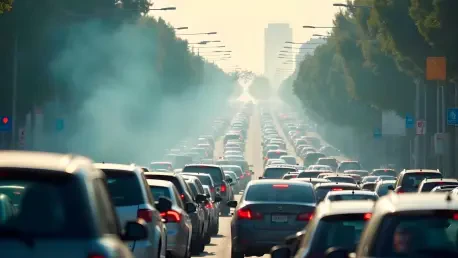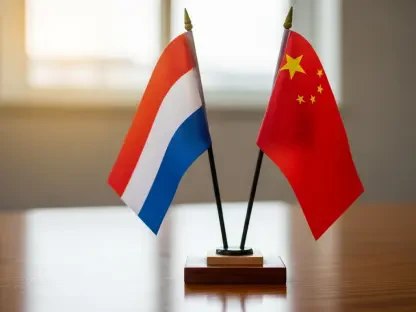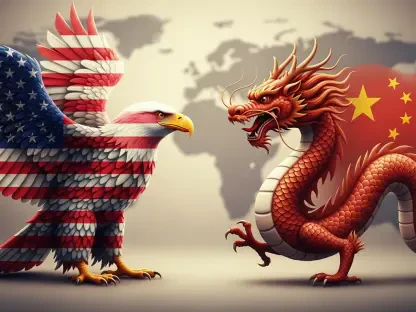A political savant and leader in policy and legislation, Donald Gainsborough is at the helm of Government Curated.
Can you explain the background and main objectives of New York City’s congestion pricing program?
New York City’s congestion pricing program was launched to address the severe traffic congestion and air pollution plaguing Manhattan. The objective was to reduce the number of vehicles entering the city’s busiest areas by imposing a toll, initially set at $15 and later reduced to $9 under Governor Kathy Hochul’s plan. The program aims to encourage alternative transportation methods, improve air quality, and generate revenue for the city’s transit system.
What prompted the Trump administration to revoke the federal government’s approval for the congestion pricing program in February?
The Trump administration withdrew its approval for the program, citing concerns that it disproportionately affected working-class Americans and small-business owners by increasing their commuting costs. They argued that the program was a form of class warfare and claimed it was an illegal toll that unfairly aimed to backfill New York City’s transit budget.
How has the Biden administration’s stance on the program differed from that of the Trump administration?
Interestingly, the Biden administration initially granted approval for the congestion pricing program in November. This approval highlighted their support for initiatives aimed at reducing traffic congestion and improving environmental outcomes. However, with the Trump administration back in power, they have reverted to opposing the program, emphasizing its perceived detrimental impact on working-class citizens.
What were the reasons behind reducing the toll from $15 to $9 under Governor Kathy Hochul’s plan?
Governor Hochul reduced the toll from $15 to $9 to make it more affordable and palatable for the general public, especially the working class. The adjustment aimed to balance the need to reduce congestion while mitigating the financial burden on daily commuters and ensuring greater public acceptance.
In what ways has the congestion pricing program reportedly benefited New York City according to its proponents?
Proponents claim the program has delivered noticeable benefits. Traffic congestion has reportedly decreased, leading to faster travel times on highways and reducing the overall time spent in traffic. Additionally, there has been an uptick in the use of alternative transportation methods, such as public transit, biking, and walking, as people look to avoid the toll.
Why does the Trump administration believe the congestion pricing program raises costs for working-class Americans and small-business owners?
The Trump administration argues that the program imposes a significant financial burden on working-class Americans and small-business owners who rely on cars to get to work or deliver goods. They contend that the toll makes it more expensive for these individuals to access Manhattan, ultimately impacting their livelihoods and increasing the cost of business operations.
What specific measures is Transportation Secretary Sean Duffy threatening to implement against New York City and the state starting May 28?
Transportation Secretary Sean Duffy has threatened to withhold approval and funding for construction projects in New York City if the program continues. These measures include halting any advance construction authorizations or environmental approvals for projects in Manhattan, except those essential for public safety. The restrictions could extend beyond the city to other parts of New York state if noncompliance persists.
What has been the response from New York officials regarding these federal threats?
New York officials have shown no signs of backing down. The city’s Metropolitan Transit Authority (MTA) filed a lawsuit to maintain the program, arguing it is essential for the city’s financial and environmental health. They believe the program’s effectiveness in reducing traffic and enhancing business activity justifies its continuation, despite federal opposition.
What is John J. McCarthy’s position on Secretary Duffy’s arguments against congestion pricing?
John J. McCarthy, the chief of the MTA’s policy and external relations, has publicly stated that Secretary Duffy’s arguments lack merit. He reaffirms the MTA’s commitment to the congestion pricing program, emphasizing that the policy is here to stay and continues to benefit the city.
How do state and city spokespersons justify keeping the congestion pricing program despite federal opposition?
State and city spokespersons defend the program by pointing to tangible results, such as decreased traffic congestion and increased business activity. They also stress the importance of maintaining the program’s enforcement mechanisms, particularly the use of cameras, to ensure compliance and achieve the intended benefits of reduced congestion and pollution.
What could be the long-term implications for New York City if the federal government follows through on its threats?
If the federal government follows through on its threats to cut off funding and approvals for construction projects, it could have serious ramifications. The city might be compelled to reconsider or even end the congestion pricing program permanently. This outcome would severely impact the city’s transit revenue and could hinder further improvements in traffic management, environmental sustainability, and public transit development.
Do you have any advice for our readers?
For anyone navigating the complexities of urban transportation policy, it’s crucial to stay informed and involved. Understanding the broader implications of these programs on environmental sustainability, economic equity, and urban planning can help advocate for balanced and effective solutions. Your voice and engagement can make a difference in shaping the policies that affect our cities and communities.









